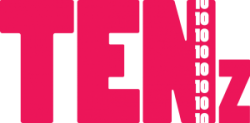By Chris Cali
The internet erupted this week over a debate that, quite frankly, doesn’t make much sense. To celebrate LGBTQ Pride this year, Philadelphia added a black and brown stripe to their rainbow flag, the longstanding symbol of Gay Pride, activism, rights and liberation. The intention was to highlight the contributions that Black and Brown folks have made specifically to the Philadelphia LGBTQ community, to symbolize the Black and Brown trans women who are still being murdered at alarming rates, as well as to address the rampant problem of anti-black/brownness that still exists within Philly’s LGBTQ spaces. Somehow this news translated to some members of the larger LGBTQ community as an attack on a sacred and iconic symbol. As is usually the case when Black and Brown folks demand recognition, inclusion or acknowledgement within a white dominant society, the loudest cries of protest came from white and lighter skinned people of color, whose day to day lives do not encounter the same rampant racism darker skinned folks experience. Common complaints included that this was “playing the race card,” “making everything about race,” the “rainbow is already inclusive of all races and identities,” “I don’t see color,” etc. These reactions misunderstood and misinterpreted the intention of Philadelphia’s decision to alter their Pride flag, but they also spoke to a deeper problem that permeates the LGBTQ community in this country.
First of all, the changes to the Philadelphia flag have zero affect on anything else but that. There was no campaign to alter the flag universally or to force anyone elsewhere to adopt this new flag. As some pointed out, adding black and brown did not represent inclusion for other ethnic groups that don’t identify with those colors, and while that is true, they weren’t meant to. This was not a move to create a new flag that includes all people of color. It was very specific to Black and Brown folks within Philly’s community only. Secondly, the idea that “there is only one Gay Pride flag,” as someone on a Facebook thread suggested to me, is simply not true. A quick Google search reveals there are over a dozen flags to symbolize different sub-groups within the larger LGBTQ blanket. The rainbow symbol (the colors of which have also been altered since its inception) became the universal symbol flown above gay bars, parade floats, LGBTQ friendly businesses, etc. That in no way, shape or form discounts the validity of other flags that represent specific groups. One is not more “real” than the other, just as one type of queer identity is not more valid than another, something those claiming the rainbow flag is some untouchable sacrament would do well to remember.
Coincidentally in the last week, another alteration of the Pride flag appeared on the internet which did not spark outrage or vitriol but instead was met with delight and joviality. A fictional monster from the horror film “The Babadook” became a new icon of LGBTQ identity and no one seemed to have any issue with that image plastered across the beloved rainbow and proliferated across cyberspace. No less than four think pieces from major media outlets addressed how the Babadook character can be read as a metaphor for queer identities in various ways. One could only conclude from the differing reactions to both of these alterations of the flag that dominant LGBTQ culture, largely represented by white gay males, would rather have a fictional, child terrorizing demon as their Pride symbol than actual, real life Black and Brown folks.

So here we really come to the underlying issue of it all. Many white gay men (and those who identify more with them than groups or cultures of color) feel a sense of ownership over LGBTQ identity, and will not only swiftly but fiercely defend that sense of ownership when they feel it is challenged by people of color. The Pride flag isn’t actually an inclusive LGBTQ symbol, it is their symbol, it belongs to them, and how dare anyone try to take it away from them. Their sense of ownership is emboldened and reaffirmed by seeing the chiseled and muscular bodies of white gay men on almost every local or national gay magazine cover and nearly every party flyer, and by seeing themselves as the go to gay male character in nearly every television show or film. The fact that the modern gay rights movement was born from Black, Brown and trans people is a matter of historical nitpicking compared to a big budget film that centers a cisgender white man as the face of our movement that is supposed to represent pride for us all. That it was not middle and upper class white gay men vacationing on Fire Island and adhering to public decency laws, but instead trans women of color throwing bricks through windows on Christopher Street who are the reason we even have a Gay Pride celebration in the first place is a reality from which they are completely disconnected. The irony of declaring inclusivity and color blindness but then being outraged by the addition of more colors to a flag is completely lost on them. The flag debate has once again exposed what every person of color who participates in mainstream LGBTQ culture already knows: that we are often and regularly perceived by many white gays as guests in someone else’s house. In response to this illumination of the same old story playing out again and again I suggest more sub-groups within our community create flags that they feel represent themselves. Create a flag for LGBTQ East Asians. Create a flag for people of size. Create a flag for differently abled LGBTQ people. Borrow liberally from the template of the all inclusive rainbow. Add as many colors to the flag as you want and fly it high whenever you feel like it. The Pride flag does not belong to anyone, it belongs to everyone.






